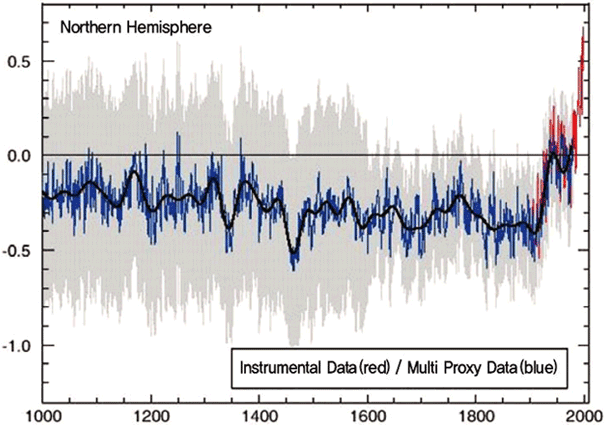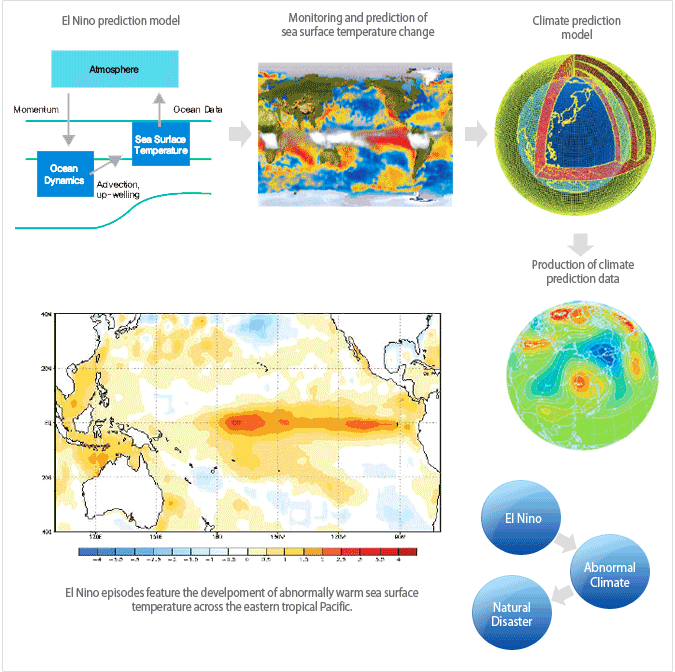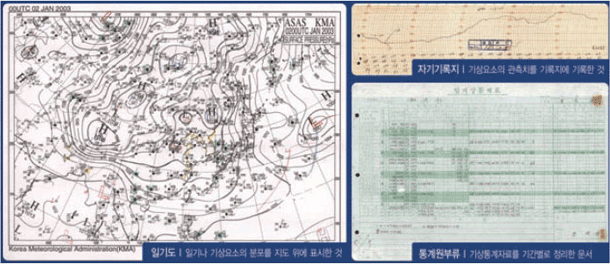
Home > What we do > Climate > Climate monitoring

The climate has been changing continuously due to the combined effect of various natural variations in the atmosphere, land and ocean. The anthropogenic effect on increasing greenhouse gases related to industrialization is considered as a major driving force of climate change, particularly in the last several decades. The greenhouse gases and aerosols produced by human activities affect the radiation balance of the earth and result in global climate change. The urban climate is also severely affected by the environmental changes associated with construction, air pollution and increasing population.
KMA carries out the role of monitoring, analyzing and predicting climate change and variability for the mitigation of natural disasters caused by unusual weather and climate. Since 1987, KMA has been monitoring background air conditions over the Korean peninsular. KMA's background air pollution monitoring activity in Anmyondo, which is an island located off the coast of western part of Korea, has joined the Global Atmosphere Watch (GAW) program of WMO from 1992.

Millennial northern hemisphere(NH) temperature multi proxy data(blue) and instrumental data (red) from AD 100 to 1999 (IPCC, 2001)

El Nino often causes extreme weather and climate conditions such as severe drought and floods, which result in loss of life, destruction of shelters and food reserves, disruption of food production and transportation systems, and environmental/health risks. It is anticipated that the occurrence of extreme climate will become more frequent due to global warming and more erratic behavior of the ocean. The severe impacts, particularly on vulnerable communities, will increase unless concrete actions are taken towards integrated preventive strategies.
Natural disasters associated with unusual weather and climate are also one of the most serious problems in the 21st century. To prepare against natural disasters, KMA has developed a climate monitoring and prediction system to detect the development of El Nino or La Nina and subsequent changes in global and regional climate. The climate monitoring and prediction information is provided through the Internet.
KMA's El Nino prediction model is a state-of-the-art ocean dynamic model in which the processes in the oceanatmosphere interface are statistically formulated so as to enhance the reliability of prediction. The El Nino model is used for continuous monitoring and prediction of the ocean temperature over the tropical Pacific for up to six months. A research effort to improve the El Nino prediction model for the coupling with global atmospheric model is in progress. The ocean-atmosphere coupled system will provide the high-quality climate prediction information required for natural disaster prevention.


The meteorological observation data for 100 years is important for representing climate in Korea. The data can beused to investigate the past climate variation and to predict future climate changes. KMA operates the several climate databases such as meteorological observation data, biometeorological, agricultural, industrial, oceanic, seasonal meteorological information and so on. All meteorological data have been compiled into statistics and printed in various kinds of publication. KMA publishes annual and monthly reports regularly and distributes them tovarious users. In addition, there are many detailed non-periodical reports on climate data and white papers.
All weather charts and paper-based records of observation are computerized and preserved in the form of CDs or DVDs. The preserved data are available for civil services and on the web pages for people's convenience.

Digital archiving on historical climate data

The office of the APEC Climate Center was established in Busan on Nov. 18, 2005 during the 13th APEC summit. It has a highly significant meaning to KMA because APCC based in Korea is the fruits of KMA's continuous effort to expand and develop APEC Climate Network (APCN) for 21 APEC member economies.
APCC is expected to play a leading role in solving the worldwide problems under abnormal climate by prediction information and sharing of human and economic resources in Asian-Pacific region.